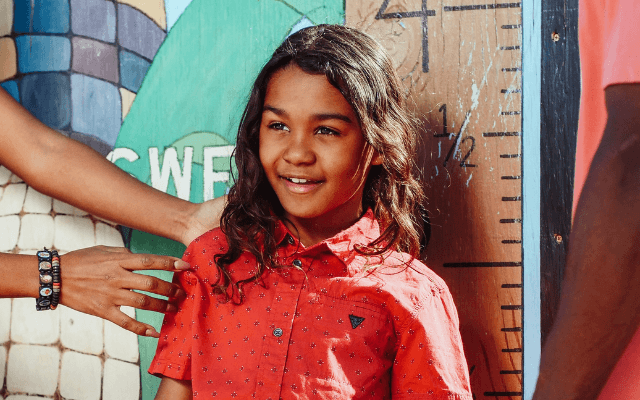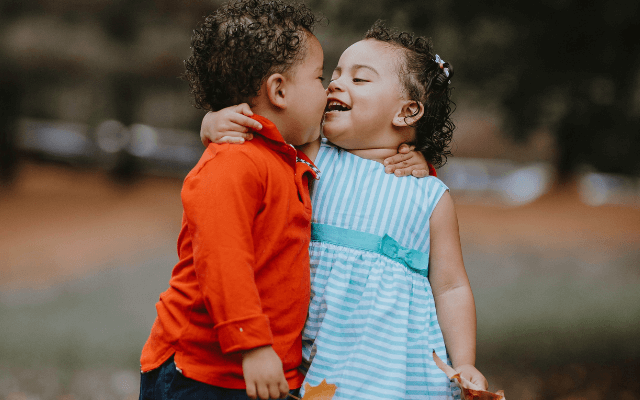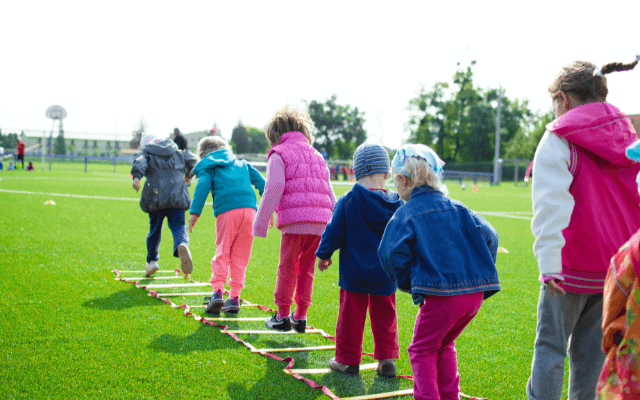Choosing the Best Christening Outfit for Boys
Christening is a significant religious ceremony that marks a child’s...

As kids grow and develop quickly, it is essential to ensure their dress fits comfortably and securely for comfort and safety. Nevertheless, finding the perfect size may seem daunting, given kids’ dress sizing differences between brands and countries around the globe.
As a parent, finding the right fit for your child’s clothing can be challenging, especially regarding dresses. Understanding your child’s growth patterns is critical to ensuring that the clothes you purchase will fit properly and last for more than just a few wears. Children grow at different rates and in different ways, making it difficult to predict what size they need from season to season.
Some kids experience rapid growth spurts, while others grow gradually. Understanding your child’s growth pattern can help you make informed decisions about their clothing. It also ensure a proper fit, and avoid the frustration of constantly purchasing new items. In addition, you can find the perfect outfit easier with some research and a closer look at your child’s unique growth pattern.
An incorrect kids’ dress sizing goes beyond just discomfort; it can affect a child’s confidence and self-esteem. In addition, when clothes don’t fit properly, it can be challenging to engage in everyday activities, leading to a negative body image.
On top of that, the constant search for clothes that fit correctly can be a massive financial drain for customers and the fashion industry. In addition, returns and exchanges account for an enormous expense due to this struggle with finding appropriate clothing.
Getting the right fit for your child’s dresses is beneficial in helping children feel good in their clothes. Plus, it also aids in avoiding needless returns or exchanges that can lead to financial losses in the clothing industry.

Accurate dress sizing for kids is essential for both comfort and appearance. Several factors affect kids’ dress sizing, including age and growth patterns, brand differences, international sizing variations, and body type and shape.
With these tips in mind, parents can make sure their children look their very best and are dressed in stylish and comfortable clothing.
1. Measuring your child: An essential step in getting the right fit for kids’ dress sizing is accurately measuring your child’s chest, waist, and hip circumference as well as the height and weight (in inches or centimeters).
2. Understanding the size chart: Understand how clothing sizes correspond with measurements. Every brand has its size chart, which can be found online or on the garment label. Look at several charts and see how they differ to determine the best fit for your child’s body type.
3. Trying clothes on: Once you determine the correct size, it’s time to try some clothes on. Make sure your child is comfortable with what they’re wearing since a good fit can also be a matter of personal preference. It helps to try different sizes and styles to find something that fits them well and looks excellent.
4. Allow for room to grow: Don’t forget to allow for growth. Clothes should fit comfortably now but give your child enough space to move freely. Children grow quickly, so it might be worth getting an allowance in size for your child to wear the same garment for a while.

Before you can even catch a breath, your children have outgrown their clothes! To stay on top of this and manage the ever-changing sizes for each child, try using this helpful tip:
1. Regular updates of dress measurements
Take body measurements every three months using a dressmaker’s measuring tape or ruler for your kids’ chest, waist area to shoulder, and hemline to ensure accurate dress sizing for children and avoid surprises at the checkout counter.
2. Avoiding tight-fitting clothes
Avoid buying tight clothing for kids, especially younger ones rapidly growing. Instead, selecting garments slightly larger than your child’s measurements will help ensure they are comfortable moving with them.
C. Choosing adjustable or flexible clothing
Choose flexible goods because kids grow up. Look for elastic waists or drawstrings and buttons to loosen. Jeans, shorts, skirts, and leggings benefit from this. Look for outfits with ruffles or pleats for a more fabulous fit, versatility, and style.
D. Keeping Comfortability in mind
Style and comfort should go together. Comfort should always be the primary concern when selecting clothes for your kids. Soft and breathable fabrics are less likely to irritate the skin and cause discomfort.

When shopping for kids’ clothing, size charts make it much easier to get the right fit. Therefore, it is worth your effort to become familiar with the sizing information of each brand. Size charts are a great tool that simplifies this task, as various labels have their measurement guides for apparel.
Here are some tips for making sure you’re using size charts properly to get the most accurate fit for your kids:
1. Take Measurements Before Shopping: Use fabric tape to get your child’s chest, waist, and hip measurements. If you’re not sure how to do this, don’t worry. Many online retailers provide helpful instructions on how to measure accurately. Write down the numbers or take a photo of them on your phone to reference them when shopping.
To get the exact measurement for dress kids’ size, you will need to measure the following areas of your child’s body:

2. Compare Measurements to Size Chart: Once you have your child’s measurements, compare them to the size chart for the clothing brand you’re interested in. If the numbers fall within the same range, that’s generally a good indication that the clothing will fit.
3. Keep in Mind that Sizes Vary by Brand: Due to brand-specific specifications and size. So, if your child fits a size on one brand’s size chart, it may not work on another.
3. Consider the fabric: The clothing fabric can affect the fit as it has different levels of stretch, thickness, and overall feel. Fabric drape plays a role in the excellent fitting. Denim has less stretch than jersey knit cotton, and lightweight fabrics hug the body better and are more comfortable.
4. Room to grow: Leave room for your child’s growth. You want the clothes to fit well now and last a few months.
A good rule of thumb is to allow for about 1 inch of extra room in areas like the chest and waist and about 1.5 inches in the inseam for pants for growth allowances.
5. Child’s body type: Regardless of their age, children come in various sizes and shapes. So don’t fall into the trap that a dress labeled “fit for four-year-olds” will suit your child; it may not fit their body type perfectly.
6. Look out for Non-Standard Sizes: Many brands provide vague “slim,” “regular,” and even “big & tall” alternatives of specific sizes tailored to offer a more suitable fit for different body types. Unfortunately, these sizes lack specific numbers, making them challenging to compare.
7. Read customer reviews: Before committing to a purchase, always read the customer reviews; they have invaluable information regarding how well the clothing fits.
8. Don’t Forget About Returns: Even if you take all of these steps, there’s always a chance that an item won’t fit as expected. Most online retailers offer free returns, so check the return policy, especially if the item is not from an in-store location.

Accurate dress sizing is crucial for kids’ comfort and confidence. Ensure proper body measurement and check multiple retailers’ sizing charts. Choose clothes with adjustable fits and opt for natural, organic fabrics over synthetic materials. Investing in the correct size leads to happier kids and better health.
Christening is a significant religious ceremony that marks a child’s...
A boy’s first communion is a significant milestone in their...
The first Holy Communion outfit for girls should be both...
As kids grow and develop quickly, it is essential to...
You'll find new product updates, upcoming promotions, and exclusive offers here. Sign up now and get 10% off your next purchase!